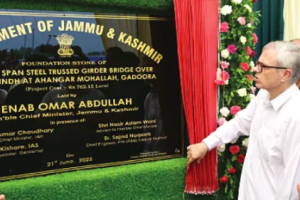September 18, 2024 – The picturesque state of Manipur, often torn by ethnic strife, has become the testing ground for Union Home Minister Amit Shah’s latest governance strategy. As we delve into the much-discussed “Manipur Strategy,” a critical analysis reveals a mix of pragmatism, ambition, and perhaps, oversight in addressing the deep-seated ethnic tensions between the Meitei and Kuki communities.
The Strategy Unveiled
Amit Shah’s approach in Manipur can be dissected into several key initiatives:
-
Dialogue and Security: Championing dialogue over conflict, Shah’s emphasis on talks with both communities is commendable. However, the effectiveness of these dialogues remains under scrutiny. While the idea of peace through conversation is noble, the implementation has seen sporadic success, with violence still simmering below the surface.
-
Economic Band-Aid: The introduction of Kendriya Police Kalyan Bhandars to provide affordable commodities might alleviate economic pressure but does little to address the root causes of ethnic violence. Critics argue this is a short-term fix, akin to placing a band-aid on a wound that requires surgical intervention.
-
Border Fencing: The decision to fence the India-Myanmar border aims at curbing infiltration, which Shah identifies as a root cause. However, this long-term solution might not yield immediate peace dividends. Moreover, the environmental and socio-cultural impacts of such extensive fencing need critical examination.
-
Public Sentiment: While Shah’s visits and announcements signal a high-level commitment to solving Manipur’s problems, the public sentiment captured through various channels shows a mix of hope and cynicism. The RSS chief’s remarks on prioritizing Manipur’s situation reflect a broader societal call for action, yet direct public critique on Shah’s strategy remains subdued, perhaps indicative of a wait-and-watch approach rather than outright approval.
Well, Amit Shah’s Manipur strategy, while comprehensive, seems to suffer from a common ailment in policy-making: the gap between policy announcement and on-ground implementation. Here are some pointed critiques:
-
Implementation Lag: The strategy, rich in promises, has yet to show tangible, widespread peace on the ground. The delay in seeing concrete results could erode public trust, which is already on a knife’s edge.
-
Lack of Inclusive Dialogue: True reconciliation requires not just talking to the leaders of the communities but engaging with the grassroots. There’s a perception that these dialogues might be elitist, not reaching the common folk who experience the brunt of the conflict.
-
Economic Focus: While economic initiatives are crucial, they seem reactive rather than proactive. A more visionary approach might involve economic empowerment that directly addresses the ethnic divide, perhaps through joint development projects that foster unity.
-
Security Overkill?: Increasing security presence might restore order temporarily but at what cost? There’s a risk of militarizing the ethnic divide further, potentially worsening the rift if not balanced with robust socio-cultural integration programs.
Conclusion
Amit Shah’s strategy for Manipur, while ambitious, walks a tightrope between immediate peacekeeping and long-term peace building. As a critic, one must applaud the intent but question the depth of engagement with the complexities of ethnic conflicts. The real test for Shah’s policy will be in its ability to evolve, adapt, and genuinely bridge the ethnic chasm, not just through force or economics, but through a profound understanding and respect for Manipur’s diverse cultural tapestry. The journey towards peace in Manipur is far from over, and as observers, we watch with cautious optimism, hoping for a strategy that truly heals rather than merely bandages.











Add Comment